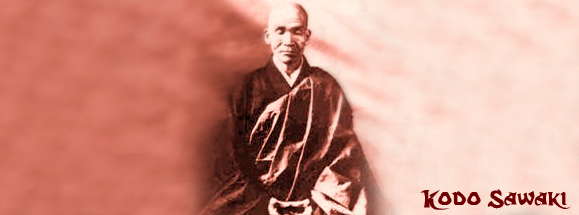Zazen ( Chinese: zuò chán pinyin or tso-chan Wade-Giles) is at the heart of Zen Buddhist practice. The aim of zazen is just sitting, opening the hand of thought. This is done either through koans, Rinzai's primary method, or whole-hearted sitting (shikantaza), the Soto sect's method. (Rinzai and Soto are the main extant Zen schools in Japan; they both originated in China as the Linji and Caodong schools, respectively.) Once the mind is able to not be hindered by its many layers, one will then be able to realize one's true Buddha nature. In Zen Buddhism, zazen (literally "seated meditation") is a meditative discipline practitioners perform to calm the body and the mind and experience insight into the nature of existence and thereby gain enlightenment (satori).
The posture of zazen is seated, with folded legs and hands, and an erect but settled spine. The legs are folded in one of the standard sitting styles (see Above). The hands are folded together into a simple mudra over the belly. In many practices, one breathes from the hara (the center of gravity in the belly) and the eyelids are half-lowered, the eyes being neither fully open nor shut so that the practitioner is not distracted by outside objects but at the same time is kept awake.
Methods.
Very generally speaking, zazen practice is taught in one of three ways.
1. Concentration
2. Koan Introspection
3. Shikantaza (just sitting)
Shikantaza is usually associated with the Soto school, and koan practice with the Rinzai school. In reality many Zen communities use both methods depending on the teacher and students.
Concentration -
The initial stages of training in zazen will usually emphasize concentration. By focusing on the breath at the hara, often aided by counting, one builds up the power of concentration, or “joriki.” In some communities or sanghas, the practice is continued in this way until there is some initial experience of Samadhi or “one-pointedness.” At this point the practitioner moves to one of the other two methods of zazen.
Koan Introspection -
Having developed the power of concentration, the practitioner can now focus his or her attention on a koan as an object of meditation. Since koans are not solvable by the intellectual reasoning, koan introspection is designed to shortcut the intellectual process leading to direct realization.
Shikantaza (just sitting)
Shikantaza is objectless meditation, in which the practitioner does not use any specific object of meditation, but uses the power developed in concentration to remain completely aware of all phenomena that arise and pass in the present moment.
|



